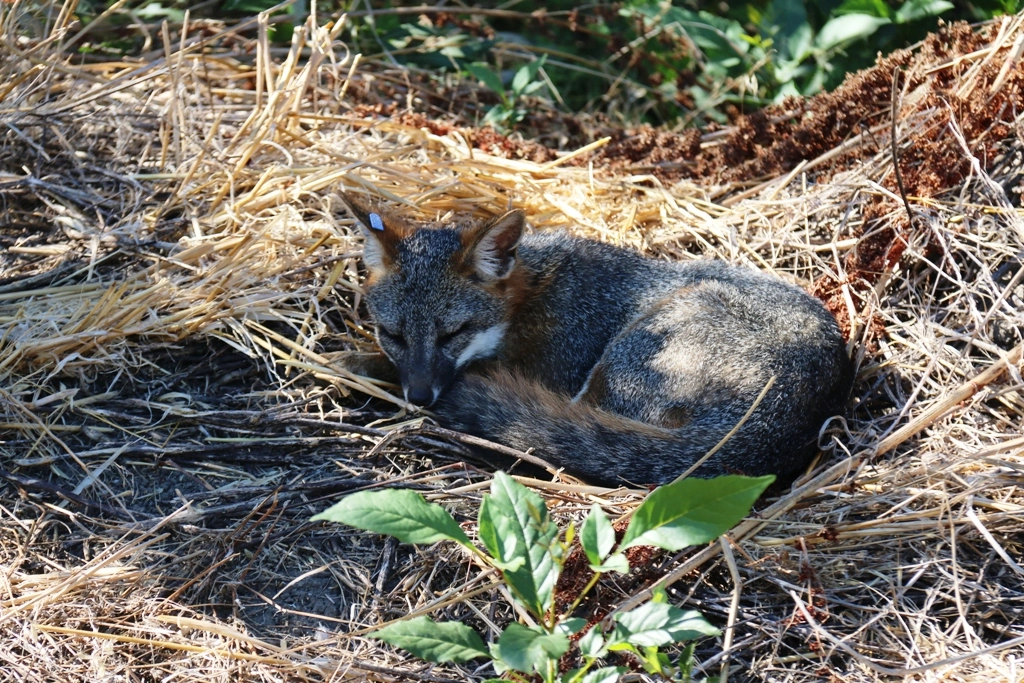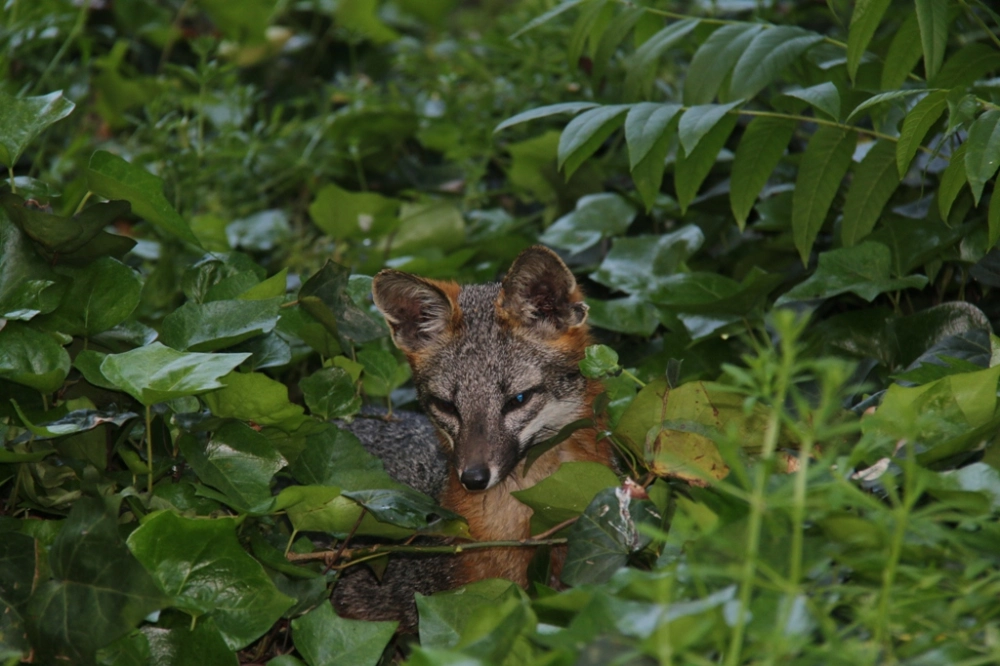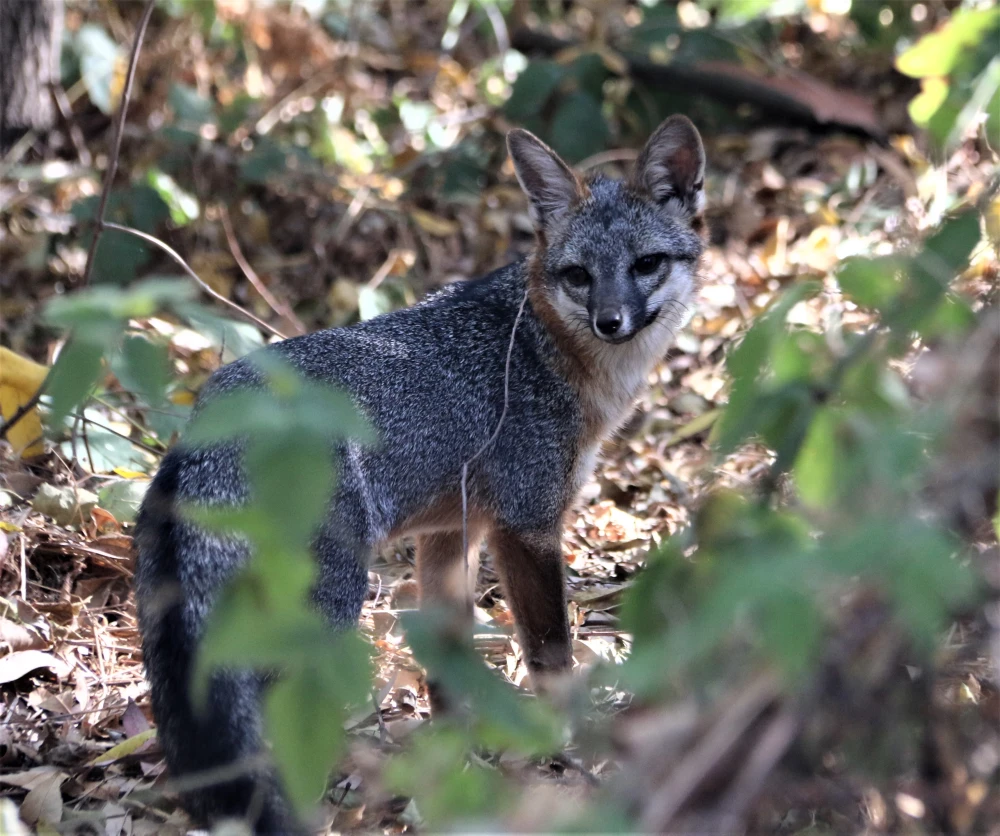
With that setting the groundwork, let’s return to that young gray fox sleeping in the weeds and dreaming. If we step for a moment into that fox’s mind what does the dream look like? As we said before, our dreams are mainly based in visual imagery, but now can we say that the fox, utilizing its principal senses of hearing and smell, may dream in flavorful sounds? Instead of navigating our environment through processing imagery, what would one’s perception of their environment be it composed “purely” of sound blended with odor and maybe in the far background a squirrel that it has its ears tuned to? In short, fragrant sounds or the sound of smelly scat? Could we interpret such a construct? Can we humans make sense of that, or is this alien territory? And Marc Bekoff wrote about the PowerPoint that this is based upon, “thanks much, the bill — it’s good to hear from you!! this is very nice — lots of good information and I like slide 7 about the senses — people need to appreciate how different we all are — I hope you can spread the word because animals need all the help they can get — all the best and good luck!! Marc Bekoff – Professor Emeritus – Biology – Colorado State University, Boulder.
Gray Foxes General Health
These two foxes appear to be in good health.
Total Numbers of Gray Foxes in the Palo Alto Baylands Nature Preserve
As of October, 2021, we have two adult gray foxes living in the Palo Alto Baylands Nature Preserve.
Section II
Update for the Urban Wildlife Research Project
Check out our Facebook page.
BE SURE TO check out our YouTube Channel for some incredible wildlife videos at https://www.youtube.com/channel/UC5ujc7p8dU1-O5AbPAWz2_Q
Check out Bill’s interview of January 1, 2021, hosted by the Town of Woodside California for their First Friday event at https://youtu.be/QrZzvmrqKTA
Undoubtedly the best Radio interview – KALW (Local PBS) Audio Recording Interviewed by Sofie Kodner during December 2020 – Broadcast 1/11/2021 5:00 PM on PBS’s program Crosscurrents https://www.kalw.org/post/bay-area-wildlife-habitats-are-disappearing-fox-guy-has-plan
Bill had a conversation with John Muir Laws and Marcia Sivek during a drawing workshop featuring the gray fox with the renowned artist John Muir Laws on January 14, 2021. It aired from noon until 1:30 PM. The Gray Fox: Art and Conservation • John Muir Laws
You can access Bill’s PowerPoint presentation Corridors & Connections: Sustaining the Health of All Wildlife presented during the October 24th P-22 Urban Wildlife Festival here: https://www.youtube.com/watch?v=Dh4MQL1D1Cc
NEW – To find out more about us, search Urban Wildlife Research Project, UWRP, gray foxes, wildlife connection, linkages, corridors and several documentaries including the video clips
If you haven’t had a chance to read some of the articles that have been written about our study of gray fox behavior and our corridor work, click on these links as they will take you to the source: Bill Leikam – The Fox Guy, and Greg Kerekes & URW
Section III
Gray Fox, Baylands Goals
Within the permit that allows the Urban Wildlife Research Project to conduct its study of the behavior of the gray fox at the Palo Alto Baylands Nature Preserve, the objectives covered area:
- Monitoring of urban gray fox Denning sites in Palo Alto Baylands.
This is being accomplished during the period when the gray foxes use a den site. It is one of the prime locations for gathering most of the behavioral data of the litter and for adults alike.
- Assessment of status and population trends of Baylands urban gray foxes
Since January 2019 a pair of resident gray foxes have claimed territory at the Palo Alto Baylands Nature Preserve.
- Identification of habitat features that promote the presence of urban gray foxes
After considering this and talking with people who know how to restore habitats, we need to assess what kinds of plants, including the Alkaline Salt Bush, would grow best along the edge of the saltwater channel and alongside the marsh. We need to grow a permanent habitat that contains the corridors and plant it as soon as possible. We’ll keep an eye on this as this is a critical link between the southern region of the Baylands and the northern region.
- Assessment of reproductive success and identification of factors that promote successful reproduction
Open up the pinch-point along Matadero Creek by developing thickets that link one area to another, instead of the present “islands”.
- Identification and assessment of possible dispersal travel routes.
Presently there can only be guesses as to dispersal travel routes. We intend to make this important question much more concrete when we attain our collaring/take/capture permit from the Department of Fish & Wildlife.






